 I’ve just discovered a new gem in this author/artist. There were moments I was reading this when I thought Tung must have been channeling my thoughts word-for-word. Quiet Girl in a Noisy World: An Introvert’s Story is a memoir chronicling Tung’s life from late grad school at the University of Birmingham in England through her first real job. She reflects some on her childhood and basically shows how she came to realize that being shy and very introverted is okay, not something to be ashamed of. Her art style is subdued in black, white, and gray watercolors and I really liked it.
I’ve just discovered a new gem in this author/artist. There were moments I was reading this when I thought Tung must have been channeling my thoughts word-for-word. Quiet Girl in a Noisy World: An Introvert’s Story is a memoir chronicling Tung’s life from late grad school at the University of Birmingham in England through her first real job. She reflects some on her childhood and basically shows how she came to realize that being shy and very introverted is okay, not something to be ashamed of. Her art style is subdued in black, white, and gray watercolors and I really liked it.
One of the many areas where I especially felt like she and I were on the same wavelength was with books, which she loves (as do I). She goes nowhere without one, even if she knows she won’t be able to read it, because it gives her a sense of comfort and the feeling of a friend by her side. She says:
When I see a book I’ve read and liked on someone else’s bookshelf…
I secretly know we are going to be good friends.
She talks about how emotionally attached she gets to the characters in the books she reads, and how it feels like a relationship has ended when she finishes them. She watches emotional movies so she can have an excuse to cry without judgment.
I also could really relate to the way she seeks meaning in everything and feels the need to constantly be productive in some way. She says:
I always doubt that I’m living up to my full potential.
I should learn a new language every year. Or a new skill. Maybe I can take some classes.
I feel like I should constantly be doing something to improve myself, learning new things, and growing as a person.
When will I know it’s okay to stop?
Perhaps never…
When she is starting to realize she finds her job meaningless, she asks:
I did everything right at work today.
Why do I still feel so empty?
I also expect to find meaning in the things I do, and when work isn’t fulfilling, it’s so draining.
I loved how she conveyed what it’s like to meet new people.
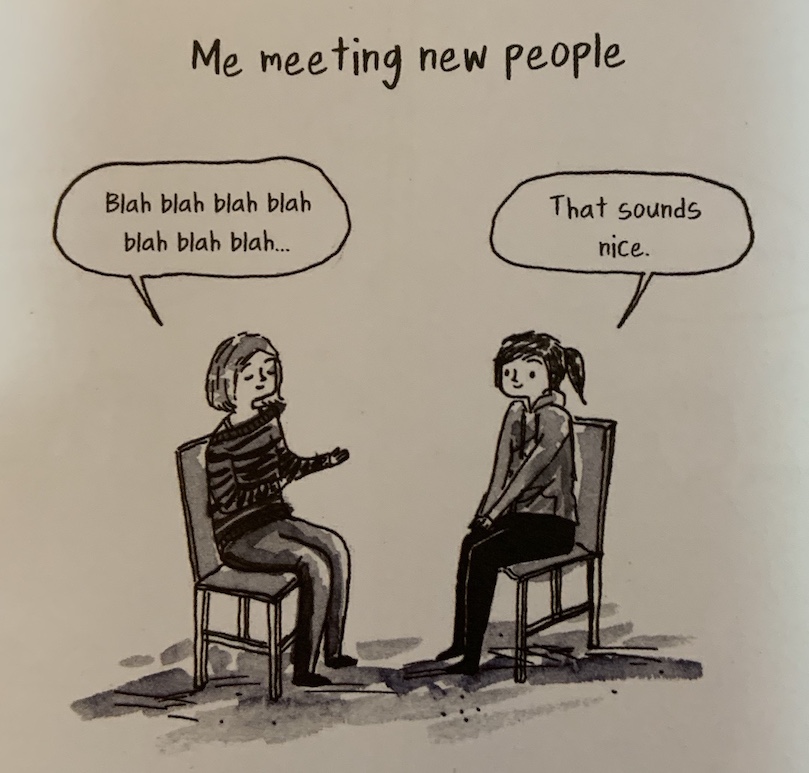
I’m so uncomfortable that this is pretty much how it is for me, too. Her general discomfort in social situations causes her a lot of stress until she finally accepts herself. She says:
I’m socially awkward and weird.
I’ve always felt like there is something wrong with me. I’ve been like this my whole life.
Sometimes her description of social interactions are so relatable. Here's the aftermath of one:
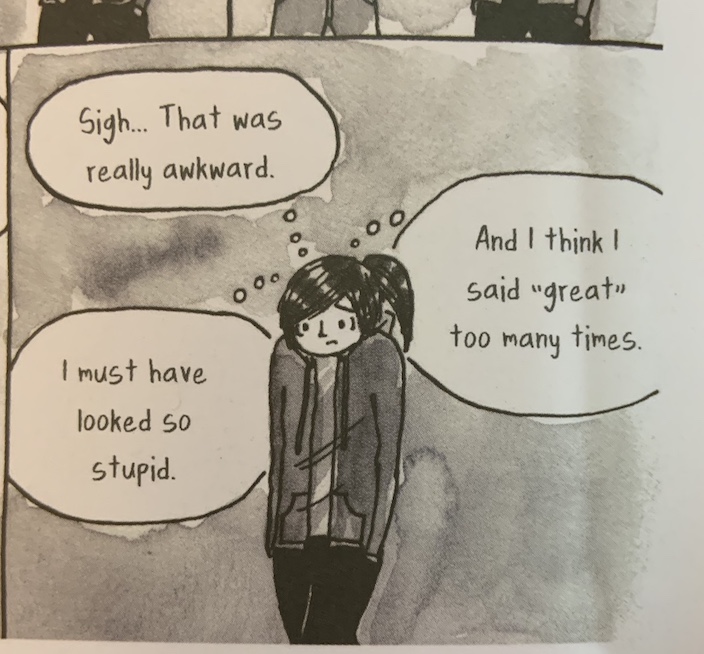
Some of it is kind of funny:
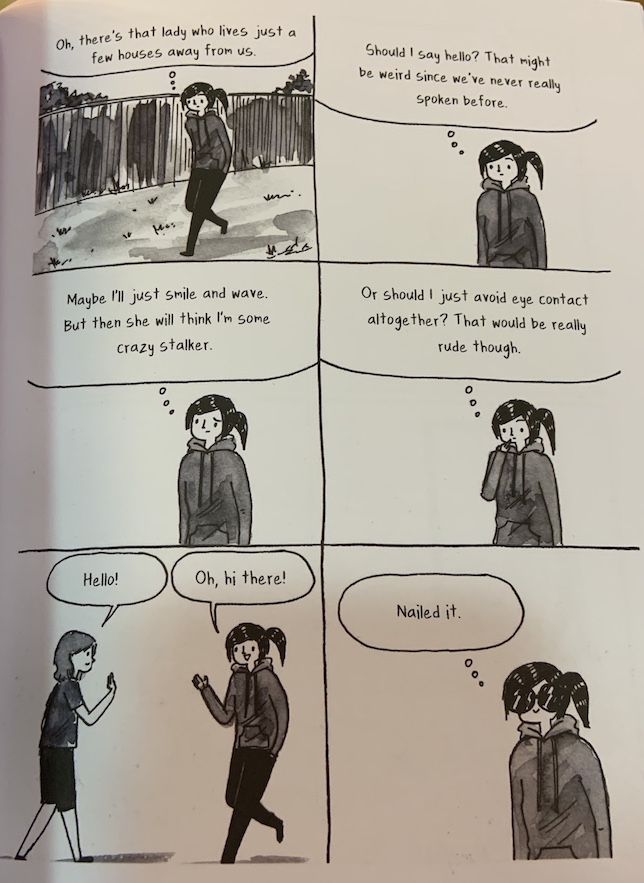
and
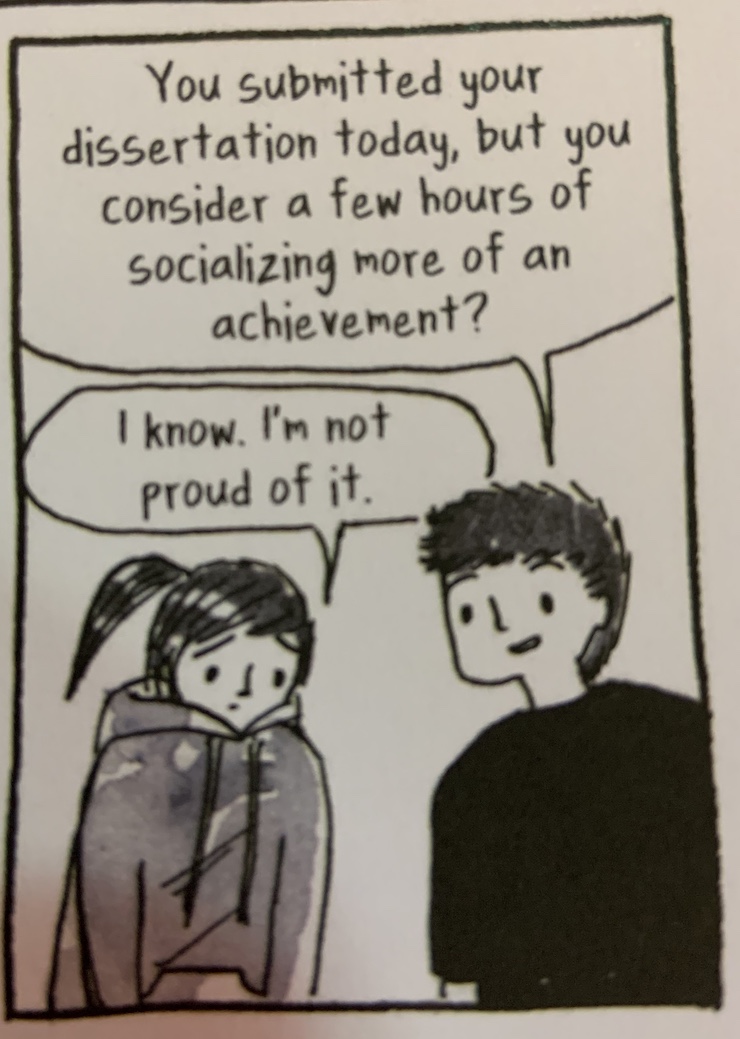
Another one that made me laugh was her having to make a phone call for work in front of people:
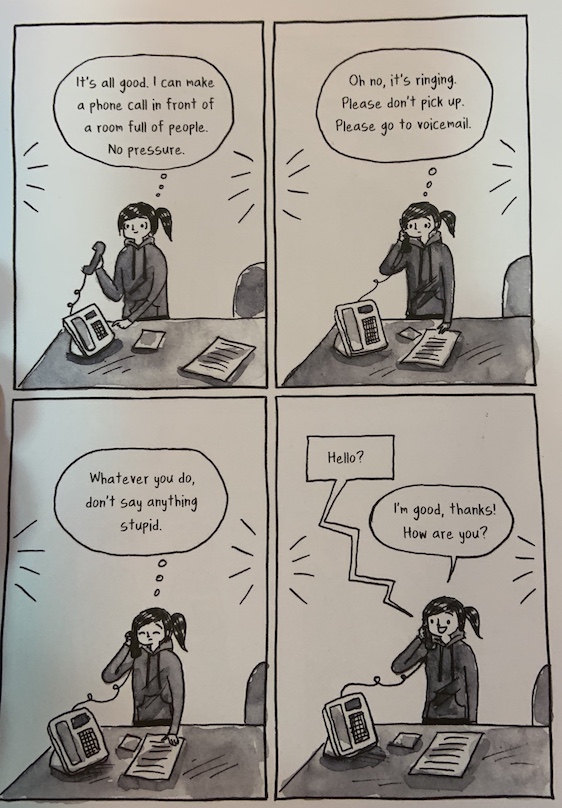
I hate calling people I don’t know well, and with people watching... Well. But in all three of these cases, it might make you laugh, but it’s kind of a sad funny.
She doesn’t feel great about herself because of the pressure society puts on introverts to be extraverted. And especially as it relates to shyness—shyness is sort of forgiven in children, but once you’re an adult you’re supposed to have outgrown it and “come out of your shell.” Although she tries to be friendly, how she really feels is:
A mixture of frustration, insanity, and dying on the inside.
She famously overthinks everything, something I can totally relate to. She’s even got a sort of flowchart that shows the thought process she goes through when deciding to go to a social event or not:
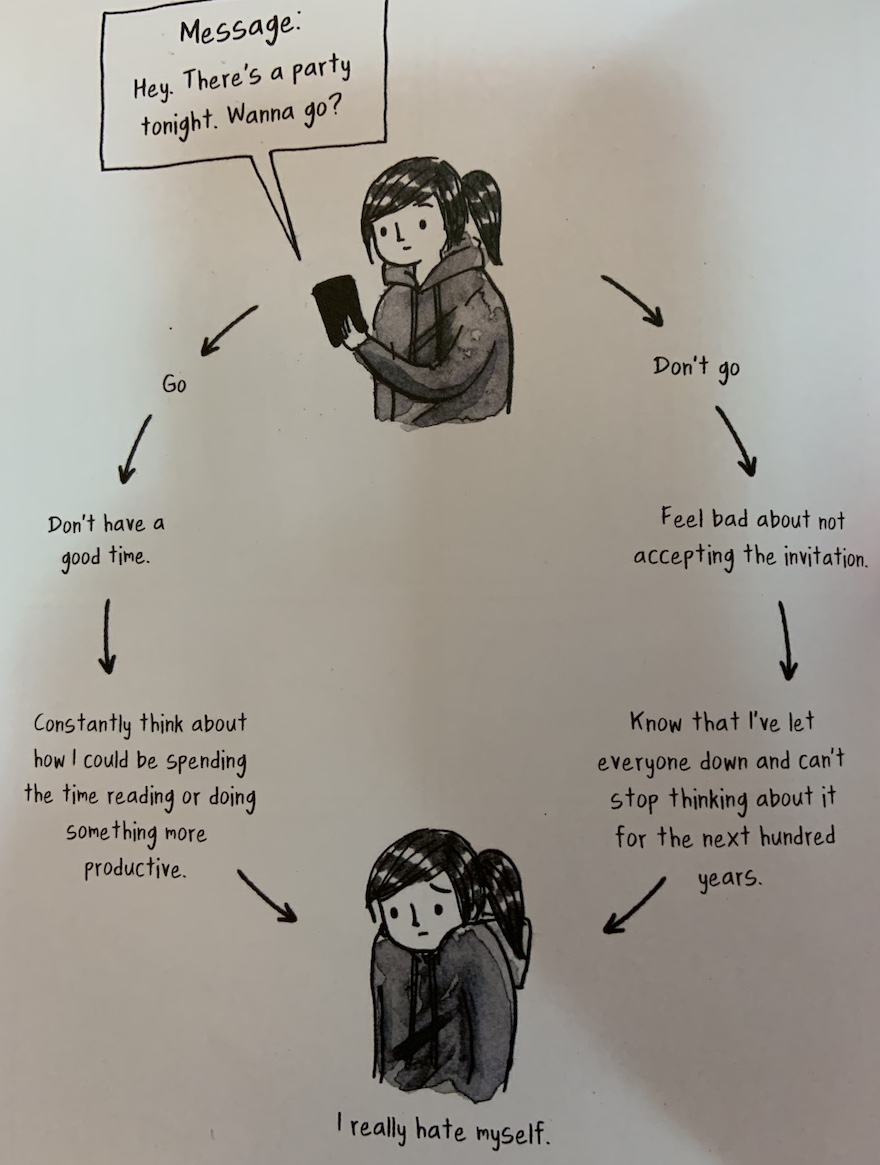
I loved how she talks about ”energy level” and how it reflects her ability to deal with social situations and her general emotional state. It’s true for me too that when I’m low on that type of energy, everything is hard to deal with:
 The good news is that by the end of the book, she has discovered and accepted her introversion, and no longer beats herself up over it.
The good news is that by the end of the book, she has discovered and accepted her introversion, and no longer beats herself up over it.
Overall, this is an excellent portrayal of the shy introvert’s experience (though not all introverts are shy). It’s very sweet and a little funny at times, but always honest and real to Tung’s experiences. Many people will find this highly relatable, and I think it could even be helpful for some people who can’t relate to it (i.e., extraverts) to learn about the way the other half lives. I’m looking forward to reading her other book, Book Love (how can I not like that, right?).
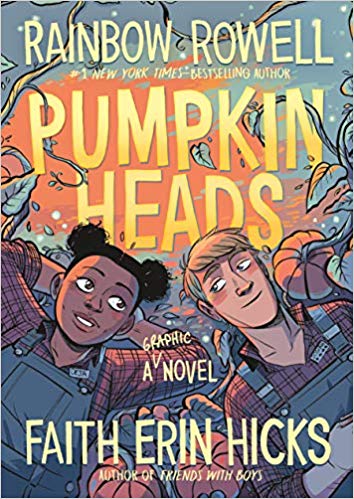 I’m a big Rowell fan because I think she does a fantastic job of capturing the emotional truth of people in her characters. I was new to Hicks, but I quite enjoyed this graphic novel. Hicks’ art was sharp and evocative. It felt like she used an autumn color palette, too, that comes across as seasonal and vivid.
I’m a big Rowell fan because I think she does a fantastic job of capturing the emotional truth of people in her characters. I was new to Hicks, but I quite enjoyed this graphic novel. Hicks’ art was sharp and evocative. It felt like she used an autumn color palette, too, that comes across as seasonal and vivid.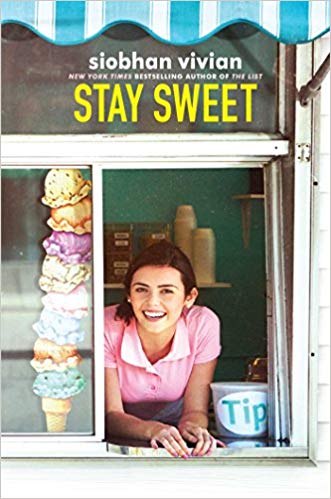 I heard about this book and put it at the top of my list since it was about a girl working in an ice cream stand, similar to one of my characters. I didn’t quite pick up the authenticity tidbits I’d hoped for (the situations were different), but I got to experience a good story.
I heard about this book and put it at the top of my list since it was about a girl working in an ice cream stand, similar to one of my characters. I didn’t quite pick up the authenticity tidbits I’d hoped for (the situations were different), but I got to experience a good story. I had heard of Federle because of his Better Nate Than Never middle grade series, but I’ve never read them. So The Great American Whatever was my introduction to him. It’s about a movie- and screenwriting-obsessed sixteen-year-old boy named Quinn. About five months before the book opens, Quinn’s sister Annabeth was killed in a car wreck, which has him devastated and not particularly functional. She was his filmmaking partner—they had a production company called Q&A Productions and Quinn envisioned them going to Hollywood together some day.
I had heard of Federle because of his Better Nate Than Never middle grade series, but I’ve never read them. So The Great American Whatever was my introduction to him. It’s about a movie- and screenwriting-obsessed sixteen-year-old boy named Quinn. About five months before the book opens, Quinn’s sister Annabeth was killed in a car wreck, which has him devastated and not particularly functional. She was his filmmaking partner—they had a production company called Q&A Productions and Quinn envisioned them going to Hollywood together some day.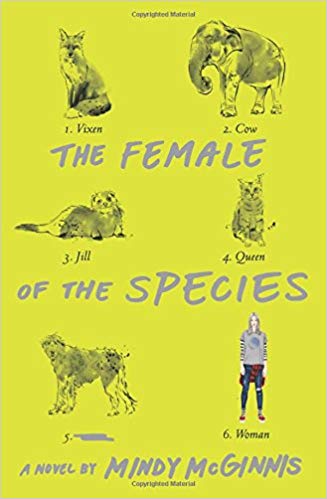 The first thing I have to say is that this is an unusual book. It’s about violence and rape culture, which means it’s wasn’t easy to read. But it felt worth reading.
The first thing I have to say is that this is an unusual book. It’s about violence and rape culture, which means it’s wasn’t easy to read. But it felt worth reading. I admit I’m a fan of Caletti, even though I haven’t yet read all of her books yet (I’m at about half). I love how she writes about mental health issues without making the stories issue books. So I was predisposed to like this one. Which was fine, because I did. I should mention that I listened to the audio book rather than read the paper book.
I admit I’m a fan of Caletti, even though I haven’t yet read all of her books yet (I’m at about half). I love how she writes about mental health issues without making the stories issue books. So I was predisposed to like this one. Which was fine, because I did. I should mention that I listened to the audio book rather than read the paper book.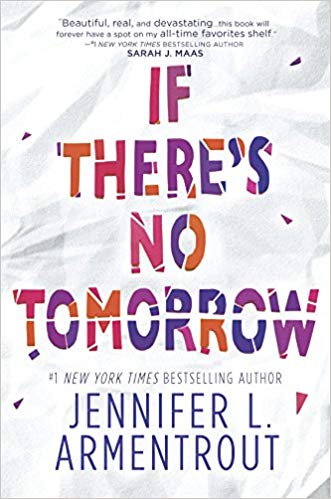 I’ve read and enjoyed another Armentrout book (I even used it for a comparison title for Finding Frances). So I was curious about this one. The back cover description didn’t excite me a great deal, but I found it on audio at the library and decided I needed to listen to it.
I’ve read and enjoyed another Armentrout book (I even used it for a comparison title for Finding Frances). So I was curious about this one. The back cover description didn’t excite me a great deal, but I found it on audio at the library and decided I needed to listen to it.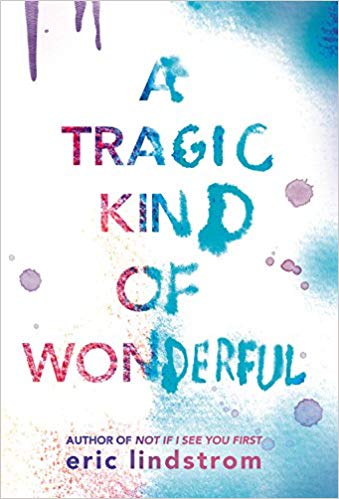 As readers of this blog will have noticed, I enjoy reading about teenagers’ experience with mental illness, and this book definitely fits that bill.
As readers of this blog will have noticed, I enjoy reading about teenagers’ experience with mental illness, and this book definitely fits that bill.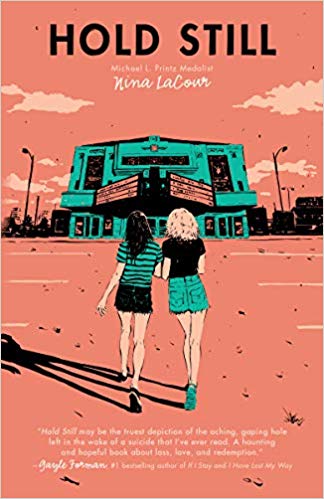 I previously read another of LaCour’s books (The Disenchantments) and liked it quite a bit, so I picked up this one. It chronicles a little over a year in Caitlin’s life immediately following her best friend’s suicide. Caitlyn’s basically shell-shocked by Ingrid’s death, mostly because she never saw it coming and feels like she should have known to be a better friend.
I previously read another of LaCour’s books (The Disenchantments) and liked it quite a bit, so I picked up this one. It chronicles a little over a year in Caitlin’s life immediately following her best friend’s suicide. Caitlyn’s basically shell-shocked by Ingrid’s death, mostly because she never saw it coming and feels like she should have known to be a better friend.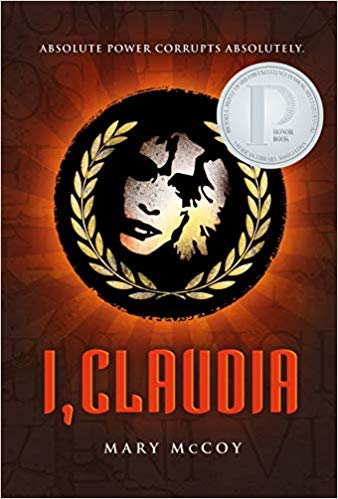 I, Claudia is a fascinating study in teenage politics gone wild in a setting where the student government at an elite prep school has practically unlimited power. The book covers three years of said government, with vastly different rulers over the years. It’s not a surprise that Claudia herself gets involve in governing, but the way things go isn’t predictable and is very interesting.
I, Claudia is a fascinating study in teenage politics gone wild in a setting where the student government at an elite prep school has practically unlimited power. The book covers three years of said government, with vastly different rulers over the years. It’s not a surprise that Claudia herself gets involve in governing, but the way things go isn’t predictable and is very interesting.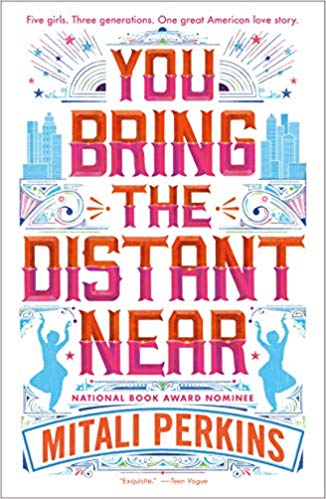 I think this book came to me through a book club I’m in and I’m glad because I loved it. I’m not quite sure why I love books about identity so much, but I do—it’s probably one of the reasons I like YA so much.
I think this book came to me through a book club I’m in and I’m glad because I loved it. I’m not quite sure why I love books about identity so much, but I do—it’s probably one of the reasons I like YA so much.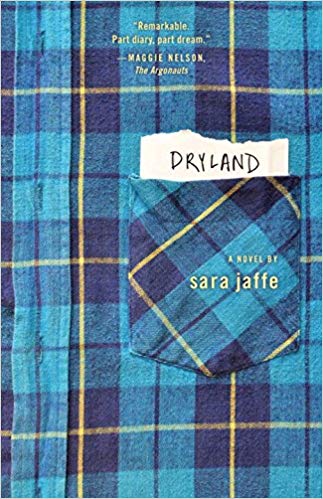 I read this quiet book in just two days, which says something because my reading pace has slowed to a crawl at this point (I’m still 14 whole books behind on my Goodreads challenge).
I read this quiet book in just two days, which says something because my reading pace has slowed to a crawl at this point (I’m still 14 whole books behind on my Goodreads challenge).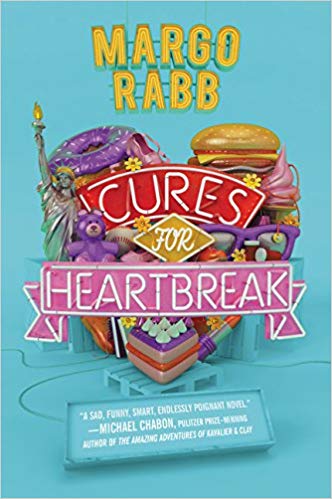 I’ve already reviewed Rabb’s other book, Kissing in America, which I really liked. So I had high expectations for Cures for Heartbreak, her first.
I’ve already reviewed Rabb’s other book, Kissing in America, which I really liked. So I had high expectations for Cures for Heartbreak, her first.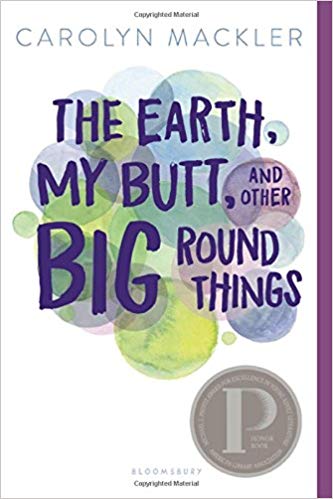 This book originally came out in 2003, but Mackler revised it in 2018. She didn’t make major changes, but did upgrade it to fit with today’s technology a little better. One of my writing friends recommended the book to me because of the kissing in the beginning (it was relevant to a story I was writing). I’m glad she did, because I quite enjoyed the book.
This book originally came out in 2003, but Mackler revised it in 2018. She didn’t make major changes, but did upgrade it to fit with today’s technology a little better. One of my writing friends recommended the book to me because of the kissing in the beginning (it was relevant to a story I was writing). I’m glad she did, because I quite enjoyed the book. This is a really interesting and unique book. It’s steeped in Mexican-America culture, but not really in a positive way—the main character, Julia, basically hates every aspect of it. To me this was interesting because one of the reasons she hates it is that she can’t navigate it well—she’s socially awkward, but not in the “standard” way (at least this was my take on it). No, she says and does the wrong thing for her culture, which might be okay in white American culture (though definitely not always).
This is a really interesting and unique book. It’s steeped in Mexican-America culture, but not really in a positive way—the main character, Julia, basically hates every aspect of it. To me this was interesting because one of the reasons she hates it is that she can’t navigate it well—she’s socially awkward, but not in the “standard” way (at least this was my take on it). No, she says and does the wrong thing for her culture, which might be okay in white American culture (though definitely not always).